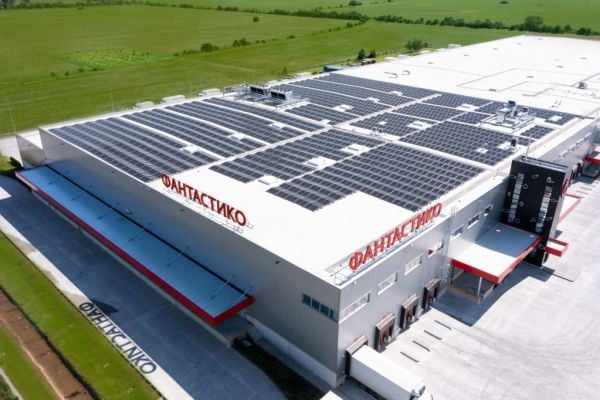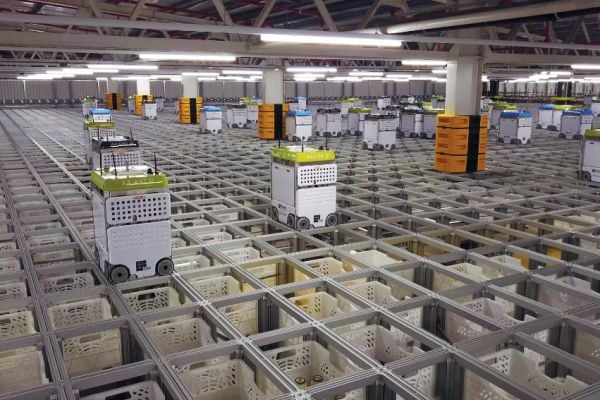Carefully managing temperature, airflow and humidity is crucial in grocery stores, ensuring they can stay fully stocked with fresh and preserved goods. It also influences a store’s carbon footprint. There are many ways to achieve supermarket climate control — it all depends on each store’s needs.
How Stores Implement Supermarket Climate Control
A supermarket’s scope 1 and 2 emissions comprise 7% of its total greenhouse gas emissions. The daily operations that create these gases also strongly influence how a store operates on the inside, so controlling them is paramount. Grocery chains use various methods to manage their buildings, including the following.
Mixed Air Systems
In a mixed air system, a rooftop unit sucks in unconditioned outdoor air, mixes it with return air and blows it over direct expansion coils. Next, it distributes it to the rest of the store. Mixed air systems are very common climate control systems for supermarkets. One downside is they need a lot of energy to condition and force the air through several rooftop units.
Mixed Air Systems With Makeup Air Units
Another approach to grocery store climate control is combining a mixed air system with a makeup air unit. This technique reduces the energy cost for increasing the supply of air by taking the cooling loads off the rooftop units. Many makeup air units employ demand control ventilation to deliver the exact amount of outdoor air necessary based on the exhaust rate.
Mixed-Air Systems With a Dedicated Outside Air System Pretreatment
An alternate way to introduce outdoor air into supermarkets is mixed air systems coupled with a dedicated outside air system (DOAS) pretreatment. The DOAS unit handles most of the store’s latent loads, those concerned with measuring humidity levels. The system reduces the need for rooftop units to dehumidify as much. It allows for a greater airflow per tonne ratio and slows fan speeds on rooftop air units, saving energy.
Dehumidifiers
One way to maintain supermarket climate control is with dehumidifiers. Stores can use portable dehumidifiers to restore equilibrium to problematic areas such as doorways, produce shelves and frozen food aisles. These devices especially come in handy after flooding or during periods of heavy rainfall. Another way to dehumidify air in humid climates is to outfit air conditioning systems with reheating coils that dry the air.
Recirculation Systems
A recirculation system provides conditioned outside air to the refrigerated sections of a grocery store. Simultaneously, it recirculates the air in the produce and dry goods sections. Recirculation systems help control pressure and humidity with minimal air input.
Why Is Climate Control So Important?
Virtually all modern stores implement some form of climate control. Supermarket climate control is vital for these five factors.
Reducing Mould Growth
Mould poses a danger to workers and customers. Supermarket climate control removes moisture from the air, preventing spores from contaminating the building. Having a clean environment to work and shop in boosts employee retention rates and encourages repeat customers.
Ensuring Freshness
At a time when 68.1% of UK residents worry increasing prices won’t enable them to buy enough food, the nation creates 9.25 million tonnes of food waste annually. Fruits and vegetables can spoil quickly in hot and humid conditions.
Keeping grocery stores cool and dry ensures they waste less food and can sell more items to their customers. It also allows them to place fewer orders and spend less money on ordering stock.
Keeping Equipment Operational
Freezers and refrigerators are essential components of a supermarket. They can also be expensive to repair and replace. Temperature and humidity fluctuations may impair their function, leading to downtime and spoilt products. For example, high humidity inside a freezer can lead to frost buildup that damages its internal components. Supermarket climate control helps equipment stay operational and lowers maintenance costs.
Making People Comfortable
Most people have experienced a shiver-inducing trip to the freezer section at the grocery store. When customers are too hot or cold, they may rush to leave the store earlier than normal, potentially spending less money along the way. Employees also tend to perform better when they are comfortable at work.
Saving Energy
HVAC systems that incorporate dehumidifiers can reduce site energy use, source electricity use and power costs across all climates. It is significantly easier to heat stores that have lower humidity levels.
This energy reduction has many benefits, including reducing fuel consumption and saving money. It can help grocery chains meet climate goals and comply with government regulations on energy use. Customers may also be more likely to shop at stores that advertise their sustainability efforts — one study found 70% of Gen Z customers say a company’s climate actions heavily influence their shopping habits.
Shining a Spotlight on Supermarket Climate Control
Grocery chains must pay close attention to their humidity, temperature and airflow so customers can focus on shopping. Careful climate control keeps food fresher for longer, prevents mould growth, helps maintain refrigerators and gives people a more comfortable experience in the store. It also saves energy so stores can lower their carbon footprint and meet environmental regulations.
Article by Emily Newton, Revolutionized.













